Civics and Citizenship,Grade 10th,Open (CHV2O)


-
Name:Civics and Citizenship,Grade 10th,Open (CHV2O)
-
Grade:Grade 10th
-
Prereq:None
-
Code:CHV2O
-
Type:Open
-
Credit Value:0.5
-
Develop Date:2021-02-01
-
Course Price:CAD $1300
-
Status:Active
Course Description:
This course explores rights and responsibilities associated with being an active citizen in a democratic society. Students will explore issues of civic importance such as healthy schools, community planning, environmental responsibility, and the influence of social media, while developing their understanding of the role of civic engagement and of political processes in the local, national, and/or global community. Students will apply the concepts of political thinking and the political inquiry process to investigate, and express informed opinions about, a range of political issues and developments that are both of significance in today's world and of personal interest to them.
Aims and Objectives:
- Recognize that perspectives on Australian democratic ideas and civic institutions vary and change over time.
- Understand the ways in which the Australian Constitution impacts on the lives of Australian citizens.
- Understand the role of law-making and governance in Australia’s democratic tradition.
- Understand the rights and responsibilities of citizens in a range of contexts.
- Analyze how Australia’s ethnic and cultural diversity contribute to Australian democracy, identity and social cohesion.
- Analyze Australia’s role as a nation in the global community.
- Develop an informed, effective, and responsible citizenry.
- Sustain democracies by citizens who have the requisite knowledge, skills, and dispositions.
- Provide citizens with fundamental values and principles of democracy.
- Educate educators, policymakers, and members of civil society regarding the importance of responsible citizenry.
- Support civic education from all segments of society and from the widest range of institutions and governments.
- Understand the ways in which the Canadian Constitution impacts on the lives of Canadian citizens.
- Recognize that perspectives on Canadian democratic ideas and civic institutions vary and change over time.
- Understand the role of law-making and governance in Canadian democratic traditions.
- Understand the rights and responsibilities of citizens in a range of contexts.
- Analyze how Canadian cultural and ethnic diversity contribute to Canadian identity, democracy and social cohesion.
- Analyze Canada’s role as a nation in the global community.
- Understand that citizens require certain knowledge, skills and dispositions to participate effectively in democratic political and civic actions.
- Analyze the role of critical citizenry in Canadian democracy.
- Analyze the relationship between democratic values and social justice as an important aspect of Canada’s democratic tradition.
- Analyze the reasons Canada makes choices about participating in political and civic processes.
- Produce technically competent people through the provision of enough knowledge about citizenship issues.
- Develop effort and commitment on the part of its citizens to build better citizenry.
- Develop a society equipped with the following qualities:
- in which human rights are respected
- in which the individual's dignity and worth are acknowledged
- in which the rule of law is observed
- in which people willingly fulfill their responsibilities
- in which the common good is the concern of all
Expectations:
- Political Inquiry and Skill Development
By the end of this course, students will:
- Political Inquiry: use the political inquiry process and the concepts of political thinking when investigating issues, events, and developments of civic importance.
- Developing Transferable Skills: apply in everyday contexts skills developed through investigations related to civics and citizenship education, and identify some careers in which civics and citizenship education might be an asset.
- Civic Awareness
By the end of this course, students will:
- Civic Issues, Democratic Values: describe beliefs and values associated with democratic citizenship in Canada, and explain how they are related to civic action and to one’s position on civic issues.
- Rights and Responsibilities: analyze key rights and responsibilities associated with citizenship, in both the Canadian and global context, and some ways in which these rights are protected.
- Governance in Canada: explain, with reference to a range of issues of civic importance, the roles and responsibilities of various institutions, structures, and figures in Canadian governance.
- Civic Engagement and Action
By the end of this course, students will:
- Civic Contributions: analyze a variety of civic contributions, and ways in which people can contribute to the common good.
- Inclusion and Participation: assess ways in which people express their perspectives on issues of civic importance and how various perspectives, beliefs, and values are recognized and represented in communities in Canada.
- Personal Action on Civic Issues: analyze a civic issue of personal interest and develop a plan of action to address.
Unit-wise Progression:
|
Unit |
Title and Subtopics
|
|
Unit 1 |
The American People
- Hours: 17 |
|
Unit 2 |
U- Election and Voting
- Hours :15 |
|
Mid-Term - Hours: 2 |
|
|
Unit 3 |
U- Legislative, Executive and Judicial Branches
- Hours: 15 |
|
Culminating Activity – 4 Hours |
|
|
Final Term – 2 Hours |
|
|
Total – Hours 55 |
|
Teaching/Learning Methodologies:
Helping students become self-directed, a lifelong learner is a fundamental aim of the guidance and career education curriculum. When students are engaged in active and experiential learning strategies, they tend to retain knowledge for longer periods and develop meaningful skills. Active and experiential learning strategies also enable students to apply their knowledge and skills to real-life issues and situations.
In the guidance and career education program, teachers provide students with opportunities to develop self-knowledge and make connections with the world around them. Students learn how to work independently and with others as they acquire the essential skills and work habits needed for success in school, in the workplace, and daily life. Students learn how to make decisions about future learning and work, how to put plans into action responsibly, and how to reflect on the actions they’ve taken and revise their plans as necessary. They learn by doing. They synthesize what they have learned by reflecting, analyzing, evaluating, making decisions, and setting goals.
Ultimately, students learn to take responsibility for their learning in preparation for life beyond secondary school. It is essential to emphasize the relationship of guidance and career education to the world outside the classroom so that students recognize that what they learn in these courses can have a significant influence on the rest of their lives, from their educational choices to decisions about their careers and personal lives. A wide variety of instructional strategies are used to provide learning opportunities to accommodate a variety of learning styles, interests and ability levels. These include:
- Electronic simulation activities
- Video presentations
- Discussion boards and email
- Assessments with real-time feedback
- Interactive activities that engage both the student and teacher in the subject
- Peer review and assessment
- Internet Instructional Videos
E-Learning Approach:
E-learning is not only a training method but it is a learning method that is tailored to individuals. It is found that different terminologies have been used to define learning that takes place online which actually makes difficult to develop a generic definition.
E-learning includes the delivery of content via Internet, Intranet, and Extranet, satellite broadcast, audio-video tape, interactive TV and CD-ROM. The term implies that the learner is at a distance from the tutor or instructor, that the learner uses some form of technology.
With attention to this new system of education that is spreading across the globe it’s imperative that the content of such study programs are enhanced and modified to serve both the learner and the instructor well whilst dealing with the gap of conventional studying methodologies. Thus the courses promise its reader an experience full of engagement, student-concentric approach, personalization and Interaction. Using a wide array of multimedia tools, cloud based LMS and diverse repository of subject tailored audio-visual material that student can utilize and learn in a stimulated work environment where he’s in charge of his work hours.
Our e-learners paddle through these courses in the mediation of skilled mentors to the finish line with understanding of their subject’s application into real world problems following a futuristic model of education.
Strategies for Assessment and Evaluation of Student Performance:
Assessment is the ongoing gathering of information related to the individual student’s progress in achieving the curriculum expectations of the course. To guide the student to his/her optimum level of achievement, the teacher provides consistent and detailed feedback and guidance leading to improvement. Strategies may include:
- Diagnostic assessment
- Formative assessment
- Summative assessment
- Performance assessment
- Portfolio assessment
- Rubrics
- Checklists
The final grade will be based on:
|
Weightage in Percentage
|
Categorical Marking Breakdown |
|
40% |
Course Work |
|
20% |
Mid Term |
|
10% |
Culminating Activity |
|
30% |
Final Exam |
|
Assessment of Learning
|
||
|
Student Product |
Observation |
Conversation |
|
Learning Logs (anecdotal) Assignment Pre-tests (scale/rubric) Quizzes (scale/rubric) Rough drafts (rubric) Graphic organizers (scale) Peer feedback (anecdotal/checklist) Reports (rubric) Essays (rubric) Webbing/Mapping (rubric/scale) Vocabulary notebooks (anecdotal) Visual Thinking Networks (rubric) Tests (scale/rubric) Exams
|
Self-proofreading (checklist) Class discussions (anecdotal) Debate (rubric) PowerPoint presentations (rubric) Performance tasks (anecdotal/scale)
|
Student teacher conferences (checklist) Debate (rubric) Peer-feedback (anecdotal) Peer-editing (anecdotal) Oral pre-tests (scale/rubric) Oral quizzes (scale/rubric) Oral tests (scale/rubric) Question and Answer Session (checklist) ) |
Resources Required by the Student:
- Microsoft Suite (Word, Excel, Power-point etc.)
- A laptop, or Mac, or Android, or any other operating system functional enough to use the web browser and use online software’s.
- Curriculum Reference : Civics and Citizenship, The Ontario curriculum







